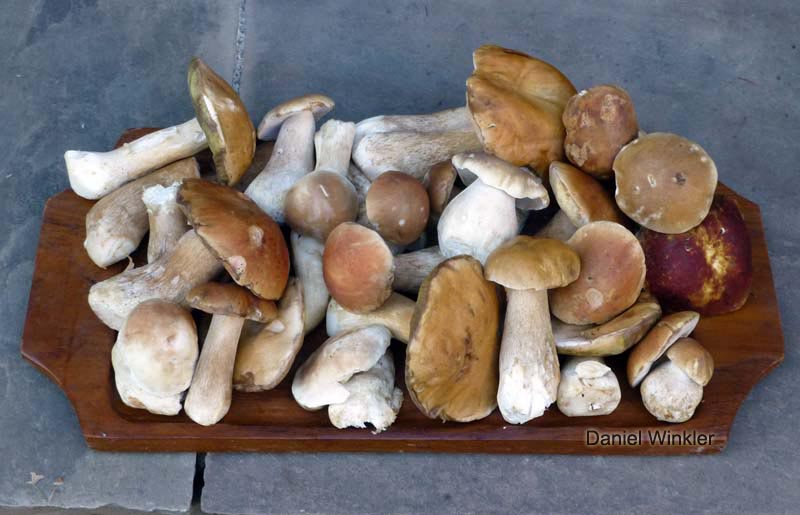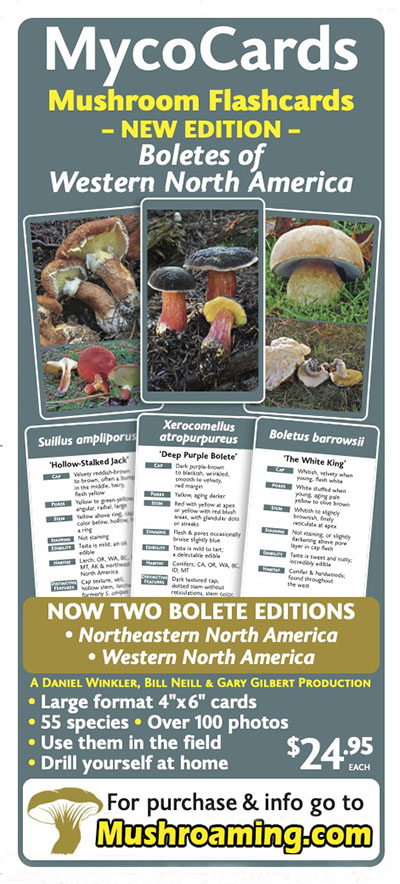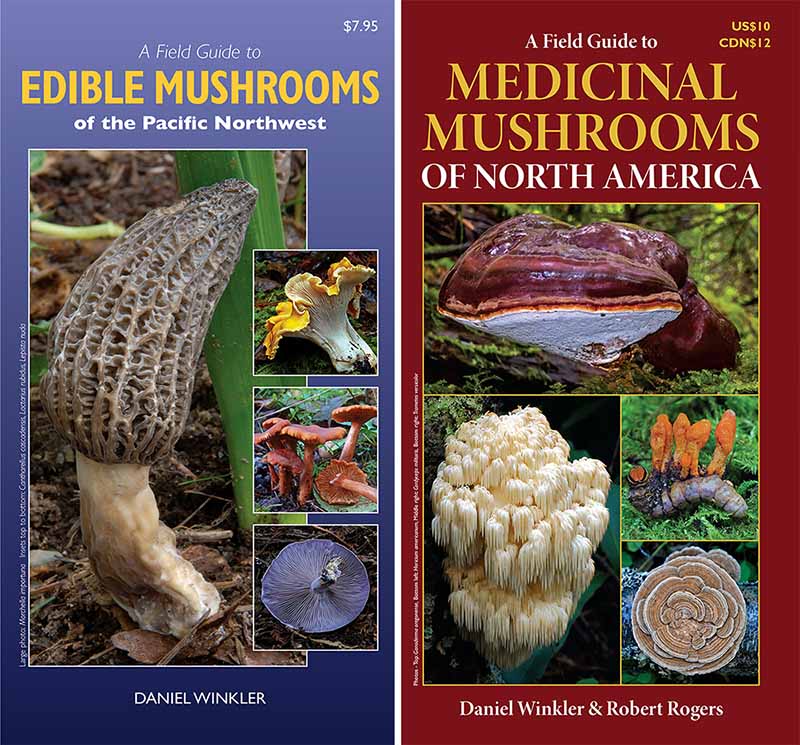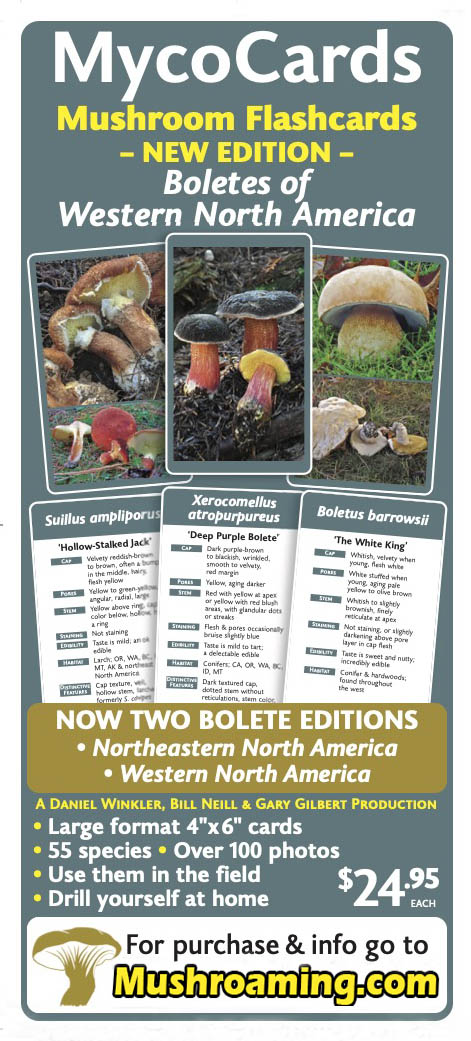Mushroaming Online Classes
by Daniel Winkler - link to bio
Mushroaming Online Classes:
Fungal Fruits of the Forest
Fall 2023
all at 7-8.30 pm PDT
Note: recording is accessible on demand for 2 weeks after each class.
In case you could not make it, had to stopp after awhile or just want to watch it again!
Send me an email, if you would like access to a recording, it is still possible!
Admission per talk is $10, each class needs its own signing up.
This round of presentations is inspired by lots of new insights from my new book:
“Fruits of the Forest – Field Guide to Edible Mushrooms of the PNW”.
Details of the Online classes are all on my Mushroaming webpages or below.
Introduction to Mushroom Identification & Refining your ID Skills
Oct. 3, Tuesday - Registration Link
This class will help people new to foraging identify wild mushrooms, but also contains abundant information to improve identification skills for experienced mushroom hunters. Daniel will present mushrooms from many perspectives: morphology-how they look, how to identify them safely and the diverse resources available in the PNW (online, books, clubs etc.) to help you successfully forage. We will look in detail at a wide variety of mushrooms growing in the PNW with a bias toward edible fungi, highlighting characteristics important for safe identification. We will address questions like, what are they made of (incl. nutritional value), when, where and why they grow, or, in other words, what is their role in the ecosystem. Understanding mushrooms is very helpful for finding them! All this will be illustrated with Daniel's stunning mushroom photography.
Fruits of the Forest - Choice Edible Mushrooms of the PNW
Fall Favorites
Mushrooms grow in abundance in the Pacific Northwest, some are poisonous, many of no culinary value and a select group are some of the best foods to enjoy. In these richly illustrated presentations Daniel will help you get to know, identify and find the best, widely known edible mushrooms as well as many less frequently recognized edibles while steering you clear of dangerous look-a-like mushrooms. You will be advised how to properly collect, carefully transport, safely prepare and reliably store your mushrooms. Key in finding prime mushrooms is getting to know their preferred habitat and their seasonality.
Part 1 - Chanterelles, Hedgehogs, Boletes, Bear’s Head and other Non-Gilled Edible Mushrooms
Thurs. Oct. 5, - Registration Link
Some of our best and easiest to identify fall mushrooms in the Pacific Northwest are chanterelles, hedgehogs, king and other tasty boletes, conifer's bear head and cauliflower mushroom. Also, good edibles are found among the corals and puffballs. What this diverse group of mushrooms shares is the absence of gills. Twelve of the "Fourteen Fantastic Fungi" in my "Fruits of the Forest" Edible Mushroom book are actually non-gilled mushrooms, since they are easier to identify and hence much saver for people somewhat new to foraging.
Part 2 – Edible Gilled Mushrooms - from Angel Wings & Oysters, Shaggy Parasols & Shaggy Manes, Princes & Knights, Matsutake & Shrimpies, Milkcaps and Candy Caps and more
Thurs. Oct. 12, - Registration Link
Gilled mushrooms included a great diversity of choice edible mushrooms. Some of them, like milkcaps, oysters and shaggy mane are fairly easy to identify, some like prince, matsutake and shaggy parasols can be safely identified with a few criteria, whereas a bunch of gilled mushrooms require a much closer look under the cap and benefit from familiarity with features specific to gills, many of them introduced already in the “Intro to mushroom Identification” class.
Medicinal Mushrooms - How to Find, Identify & Process Them
Thurs. Oct. 19 - Registration Link
Daniel will share a wealth of information about and beautiful images of medicinal mushrooms. In the introduction he will discuss theories of why mushrooms hold great medicinal promise for our times, while also pointing out limitations of our knowledge when it comes to practical uses. The core presentation features the most common and useful medicinal mushrooms, showing key features to enable safe identification and provide warning signals if an ID is challenging. He also will talk about specific habitat, fruiting season and - when available - culinary value. In addition, Daniel will share traditional uses, current medical use, and documented bioactivity. Extra attention is paid to instructions on how to properly collect and process mushrooms in order to make one’s own extracts, tinctures, teas and salves. This talk is inspired by "Field Guide to Medicinal Mushrooms of North America” Daniel co-authored with Robert Rogers.
Some Feedback Received for the Spring Mushroom Classes:
Daniel, thank you for the great webinar! It has proved very useful to me already. In a couple of places I now have found many mushrooms that I had not seen before and some I had seen but had not known much about. You covered them in your presentation and I subsequently checked out all the characteristics. Surprisingly, I found a Shaggy Parasol. I picked several of them today and they all checked out by your criteria, white pores, orange staining etc. Thanks again for the great information.
Ron K.
That was a terrific class, thank you for all that information, delivered so humorously....
by Anna W.
The Spring Edibles webinar on Zoom worked out very well, and was highly informative. Thank you! I'm looking forward to the Boletes webinar.
Patty C.
Really enjoyed your talk last night. It was fun and very informative,
Elizabeth C.
I thoroughly enjoyed your presentations. You are a very engaging presenter and a font of valuable information,
Amande F.
I caught your class last night on spring fungi. Great class! Lot's of great info that’s very hard to get out of field guides
Zachary C.
Thank you for the super fun and informative webinar last night. Will definitely join for another!
Carrie V.
I just wanted to thank you for the spring mushroom talk on Wednesday this week. I learned a ton! I also have been enjoying your Bolete flashcards.
Dan L.
Admission per talk is $10
if you have questions, please send me an email.
My new book:
"Fruits of the Forest
A Field Guide to PNW Edible Mushrooms"
is available here
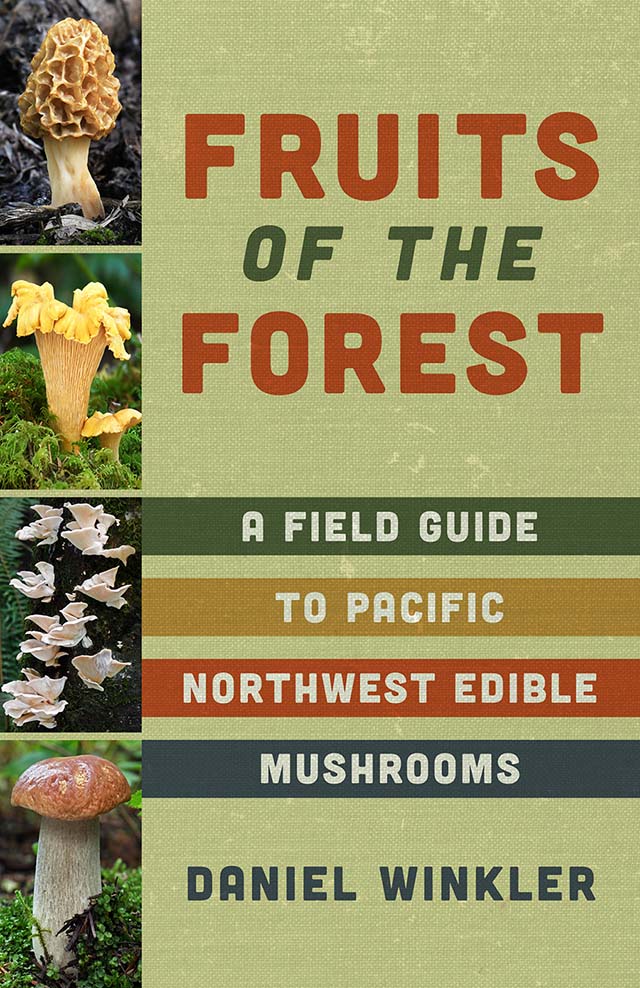
Below images from my Western Boletes presentation
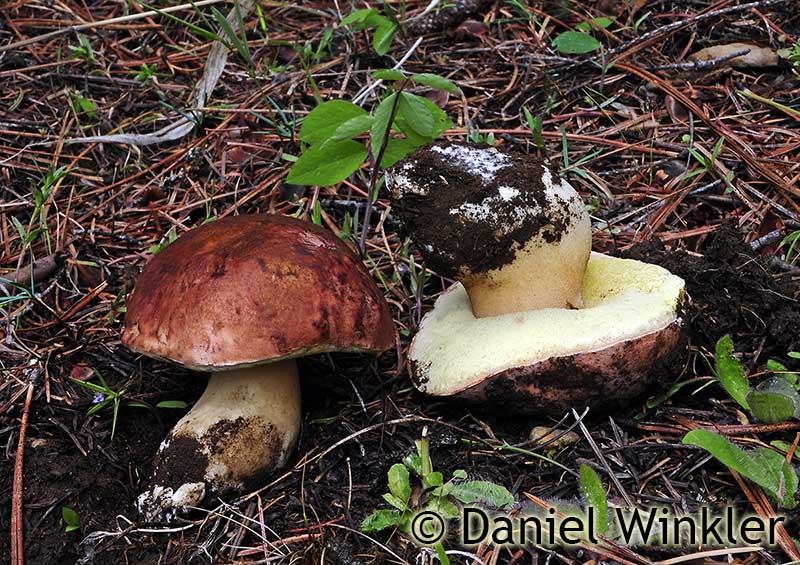
Spring King - Boletus rex-veris in its habitat and in our basket.
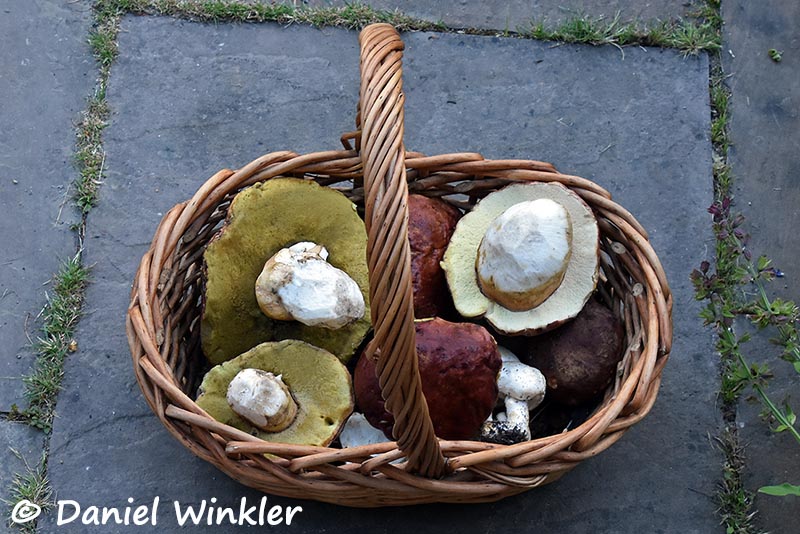
Sample of Spring MushroomS
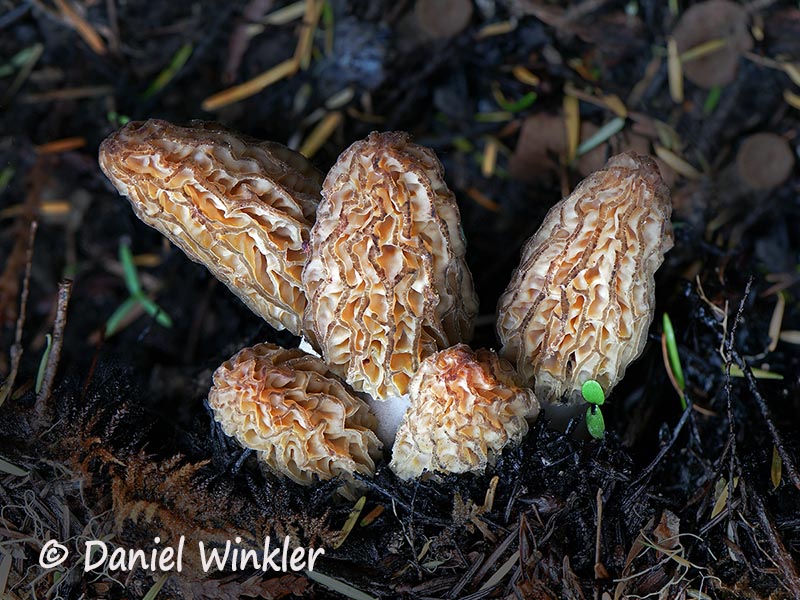
A nice nest of Morchella tridentina, a "Natural" blonde morel in the black morel clade.
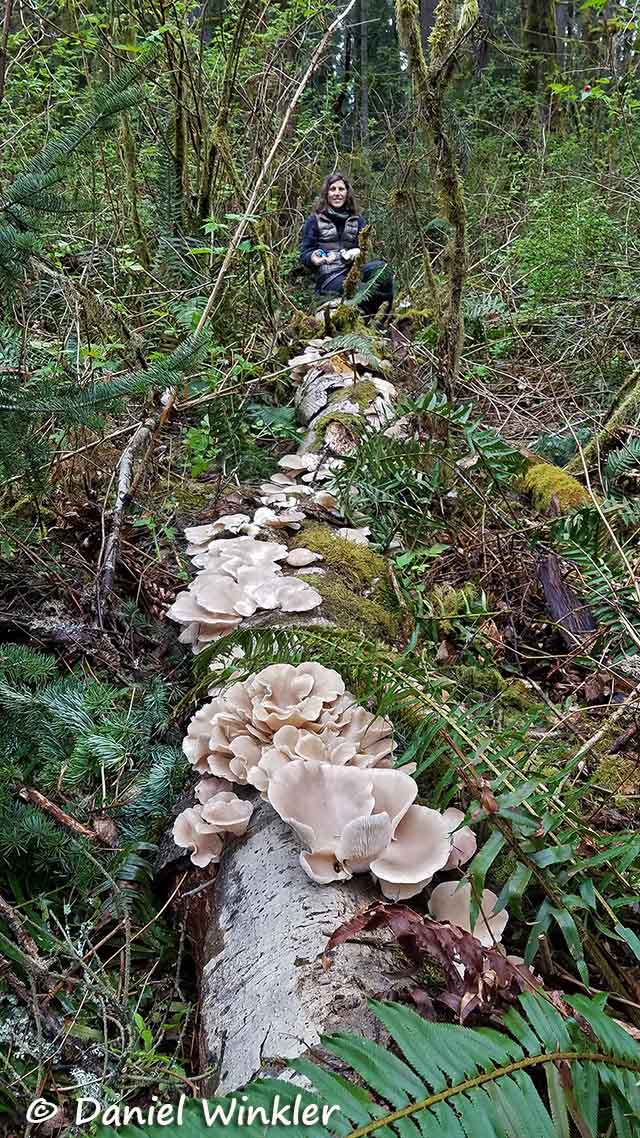
What an awesome Oyster (Pleurotus pulmonarius) fruiting growing on a dead alder!
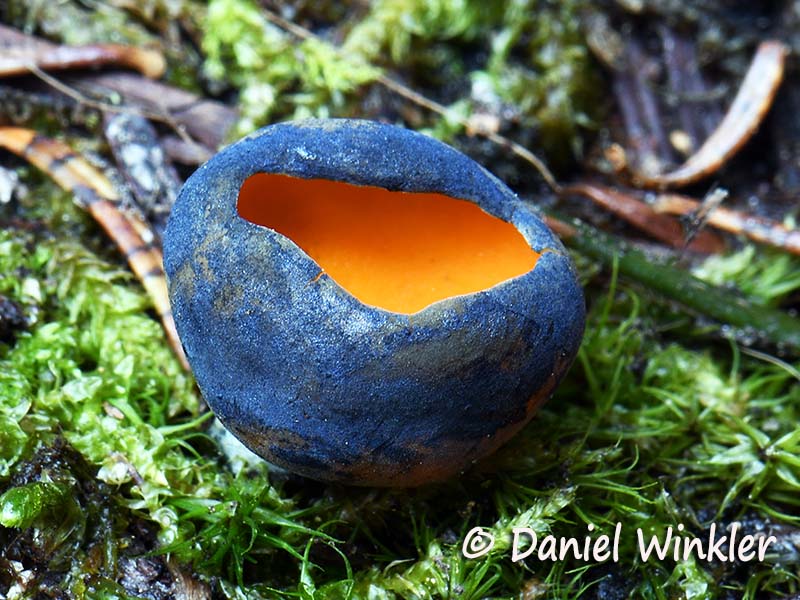
Beautiful Caloscypha fulgens fruits at the same time morels do, but is not edible.
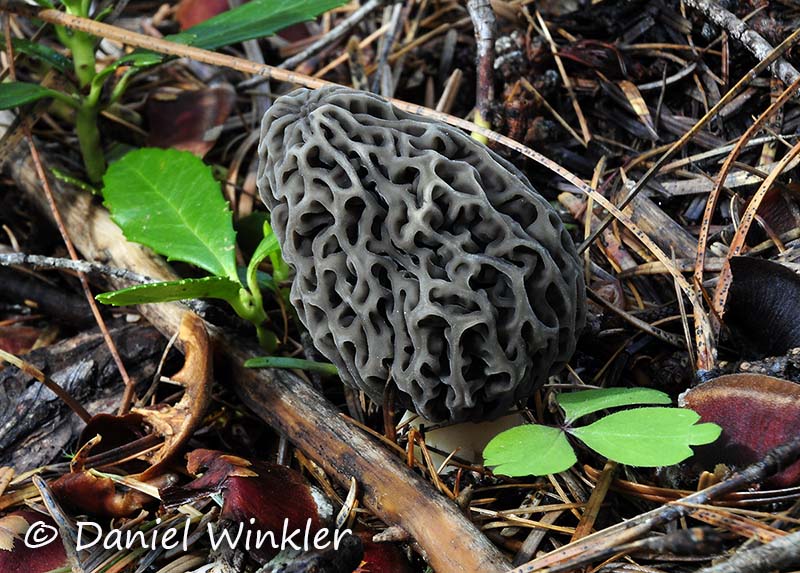
Probably a young Snyder's morel (Morchella snyderi), one of our "Naturals", meaning they fruit without fire occurrence.
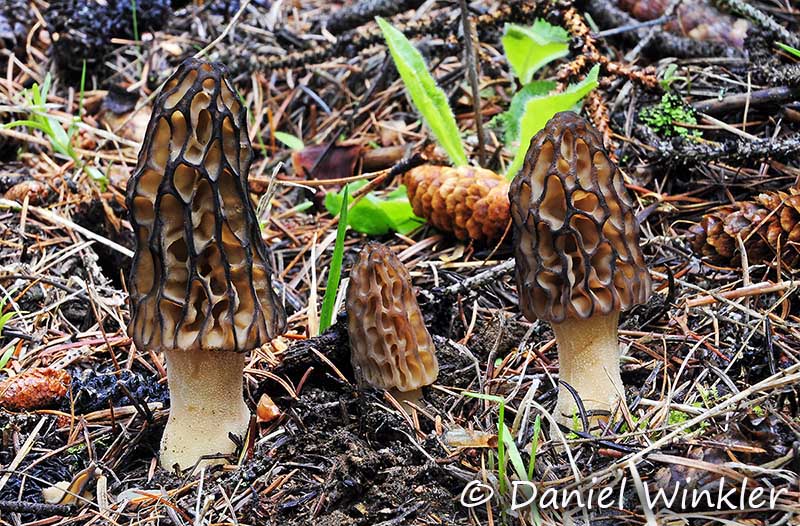
Morchella exima group, one of the common early fire morels
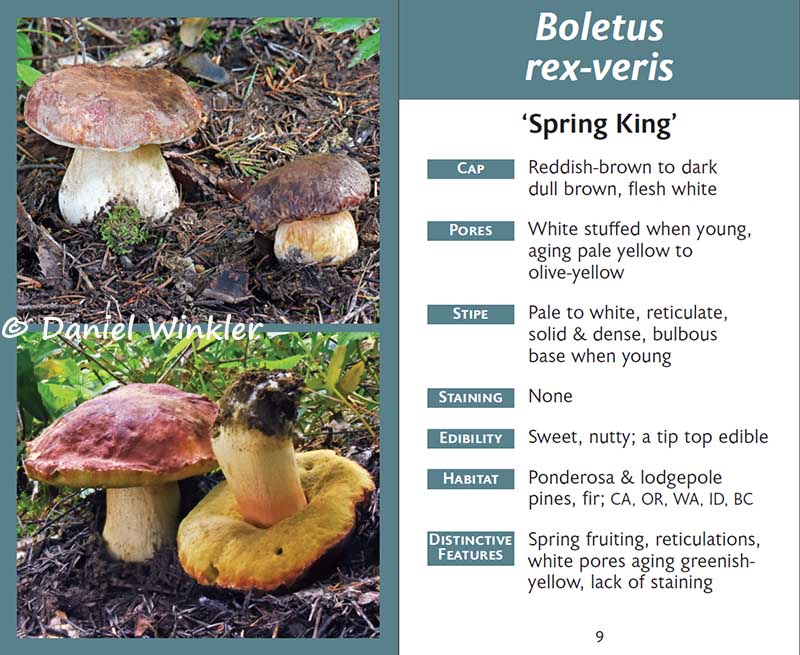
The Spring King, Boletus rex-veris, what an awesome mushroom!
Here front and back side from our new Boletes flash card deck that contains 55 Western species, available here
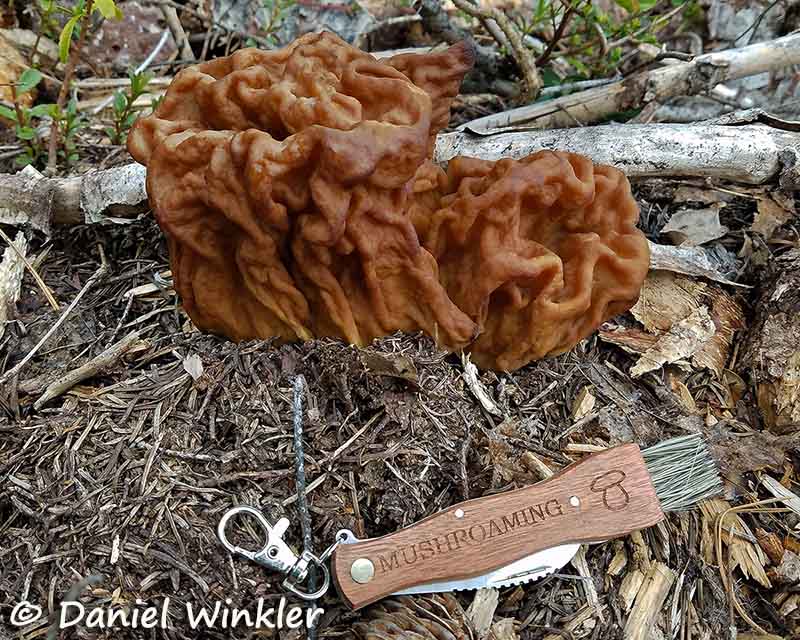
Gyromita montana, when well cooked a harmless and tasty Brain Mushroom aka False morel. My knife is available here
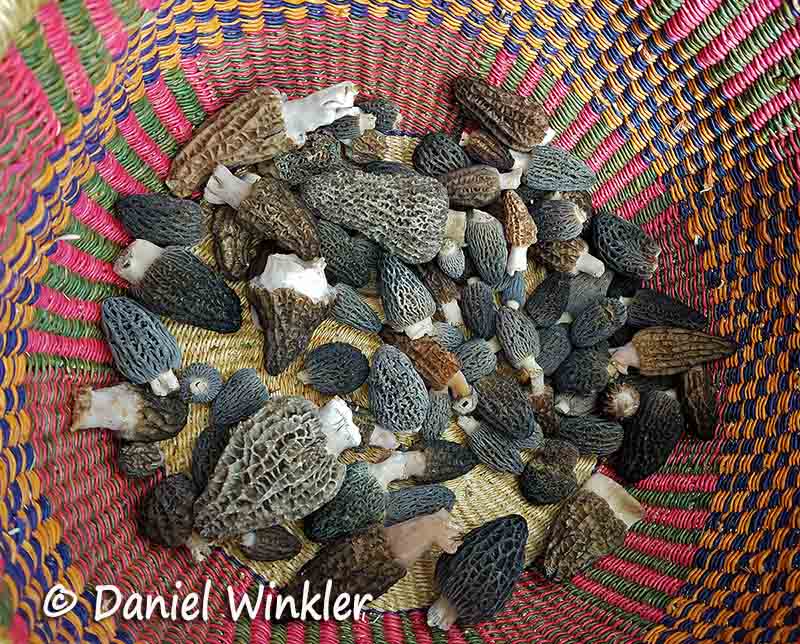
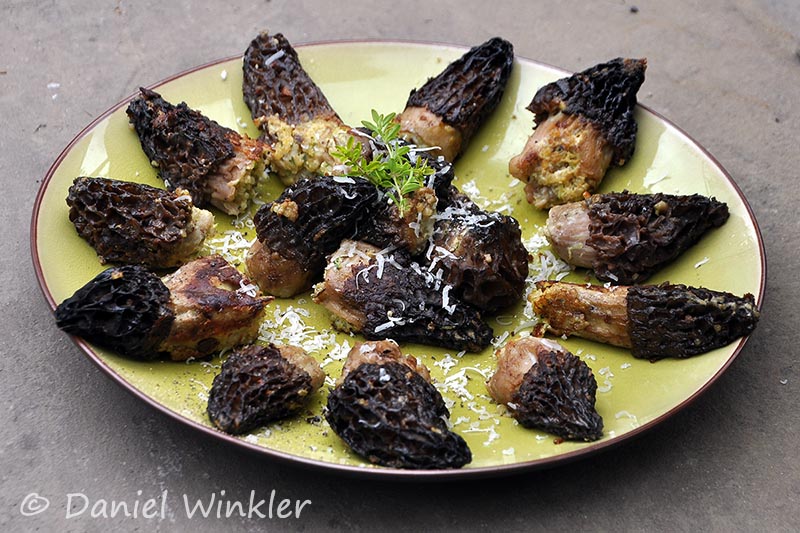
Stuffed morels! Filling made out of saffron rice, goat cheese, fried minced morel stems with onions & garlic, yummy!
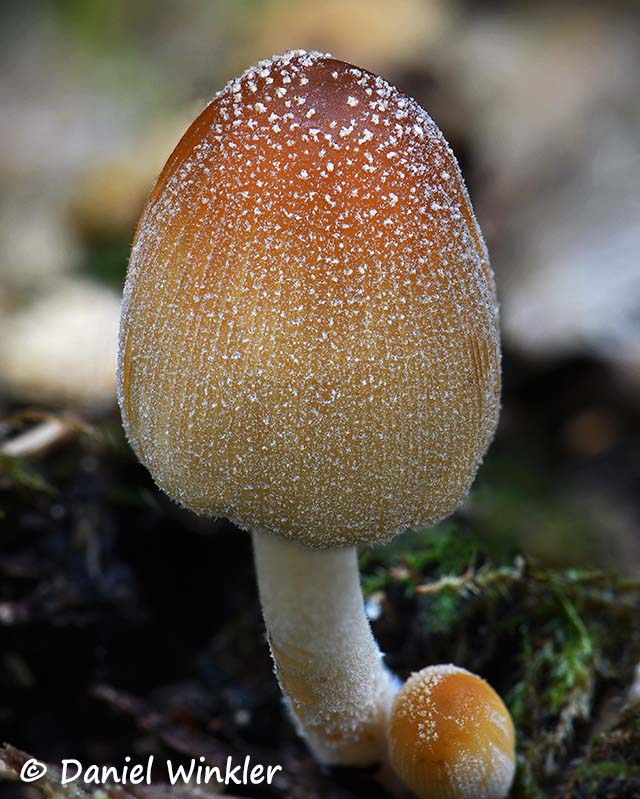
A fresh Mica cap, Coprinellus micaceus. Mica refers to the fine grains that usually wash away with the first rain.
some more detailed bolete info for the PNW I published online 10 years ago
Edible Spring Mushrooms of the PNWby Daniel Winkler - link to bio
7 pm March 24, 2021
This PNW Spring Edible Mushrooms class is designed for people new to foraging as well as experienced mushroom hunters who will be able to learn new fungal facts and tricks that will enrich your life and fridge. Daniel will focus on how, when and where to find our best spring mushrooms and how to identify them safely recommending the best mushroom reference materials for the PNW and how to use these resources. All this will be illustrated with Daniel's stunning mushroom photography. Mushrooms covered will include Natural, Landscape, Blonde & Fire Morels (Morchella spp.), Spring morels or Thimble caps (Verpa bohemica) and False morels (Gyromitra montana) and how to tell them apart and safely process and prepare them. Daniel will share where to find online maps to locate last year’s burns that should burst forth in morels in a few months; Also, there will be plenty of snow melt humidity lavishly soaking mountain soils, which should not only benefit morels but also delicious Spring Kings (Boletus rex-veris) in the Cascades. A fairly easy to find low-land spring fruiter is the always abundant Oyster mushroom (Pleurotus ostreatus) that also has great medicinal qualities. Furthermore short-lived, but long loved Shaggy Manes (Coprinus comatus) can fruit in spring as well. The similar, but much smaller, less glorious, still enjoyable backyard & park edible Mica caps (Coprinellus micaceus) has already started to fruit and will be going for awhile. And there are several other spring & year-round mushrooms that will be covered.
Furthermore, Daniel will share ideas how to prepare your delicious spring mushrooms and will be open to questions.
Looking very much forward meeting you at the webinar!
Spots are limited and registration started already.
Admission is $10
if you have questions, need to pay by check or need reduced rate send me an email.
Registration Link
A review I received:
Daniel, thank you for the great webinar! It has proved very useful to me already. In a couple of places that regularly walk I now have found many mushrooms that I had not seen before and some I had seen but had not known much about. You covered them in your presentation and I subsequently checked out all the characteristics. Surprisingly, I found a Cauliflower mushroom (Sparassis radicata) that was in an unusual place - a knothole of a downed log. Another one that I had seen but knew little about was the Shaggy Parasol. I picked several of them today and they all checked out by your criteria and that of several books that I have - white pores, orange staining etc.
Thanks again for the great information. Ron K.
2 of Daniel's handy fold-out field guides, available here
download PNW Mushroaming resources

